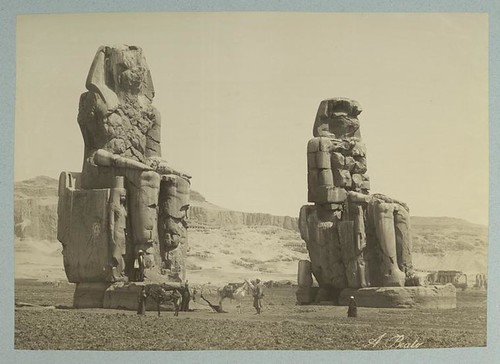This semester I'm taking an Ancient Egyptian class and wanted to share some of the incites from a documentary I just watched entitled Egypt’s Golden Empire Part II: Pharaohs of the Sun.
If you're not familiar with hieroglyphics, this is an educational video, which explains the use of hieroglyphics in politics, especially the use of hieroglyphics by Amenhotep III, and how they compare to diplomatic affairs today.
Here's a general synopsis of Amenhotep III use of hieroglyphics in politics
Amenhotep interchange of political discourse with his rivals was written on small clay tablets, otherwise known as the Amarna letters discovered in 1887. Egypt’s messengers carried these tablets back and forth between rulers. The tablets described Egypt’s status as a superpower. As a sign of loyalty, ambassadors flocked to the Pharaoh's court with gifts and tributes. The eastern kings were envious of Egypt’s riches and the messages expressed their desperation. “They were prepared to beg for it”. The rulers expressed the overabundance of Egypt’s gold in the tablets, and if Amenhotep intended to grow his power, he would essentially have to share it with neighboring countries. He gave them gold, but just enough to keep them wanting more. “The kings of the near east were trading gifts, not blows.”
Amenhotep III uses his hieroglyphic messages to promote his own power and popularity with the people of Egypt
Only Amenhotep’s triumphs were carved into amulets shaped like scarabs. These portable scarabs were inscribed with Amenhotep’s latest achievements and they were distributed to the peoples of Egypt. These items of propaganda were the “first newspapers in history”. Consequently, the amulets were used to send news of Amenhotep’s marriage to a commoner, thus sending word that the almighty king was not only powerful, but also loyal and understanding to the common people. Consequently, the temples erected in Amenhotep’s and Queen Tiye’s honor at Soleb had hieroglyphics at the base of the columns displaying captive Nubians. This was a graphic representation of Amenhotep’s power for the entire world to see.
Amenhotep III’s use of hieroglyphic messages is historically significant
Amenhotep III’s use of hieroglyphic messages provide us a glimpse of Egyptian relations with Babylonia, Assyria, the Mitanni, the Hittites, Syria, Canaan, and Cyprus. They are important for establishing a record and chronology of the period, and consequently, the history of diplomacy. Interestingly enough, at Soleb, references to the Israelite God Yahweh appear in several hieroglyphics, leading many biblical scholars to believe that Amenhotep III, or at least his scribes, must have at least heard about the Hebrew God Yahweh in 1400 BC. Subsequently, this graphic display would lend credence to the Exodus and the Israelite’s journey through the desert led by Moses (Aling et al. March 8, 2010).
Source
- Aling, Dr. Charles, and Dr. Clyde Billington. Associates for Biblical Research, "The Name Yahweh in Egyptian Hieroglyphic Texts." Last modified March 8, 2010. Accessed February 6, 2012. http://www.biblearchaeology.org/post/2010/03/08/The-Name-Yahweh-in-Egyptian-Hieroglyphic-Texts.aspx.
- Amenhotep III Photos. Brooklyn Museum









1 Comment:
This is fascinating. It makes me wants to go back to the British Museum and looks at the Egyptian exhibition again.
Post a Comment
We appreciate comments, but we delete SPAM.